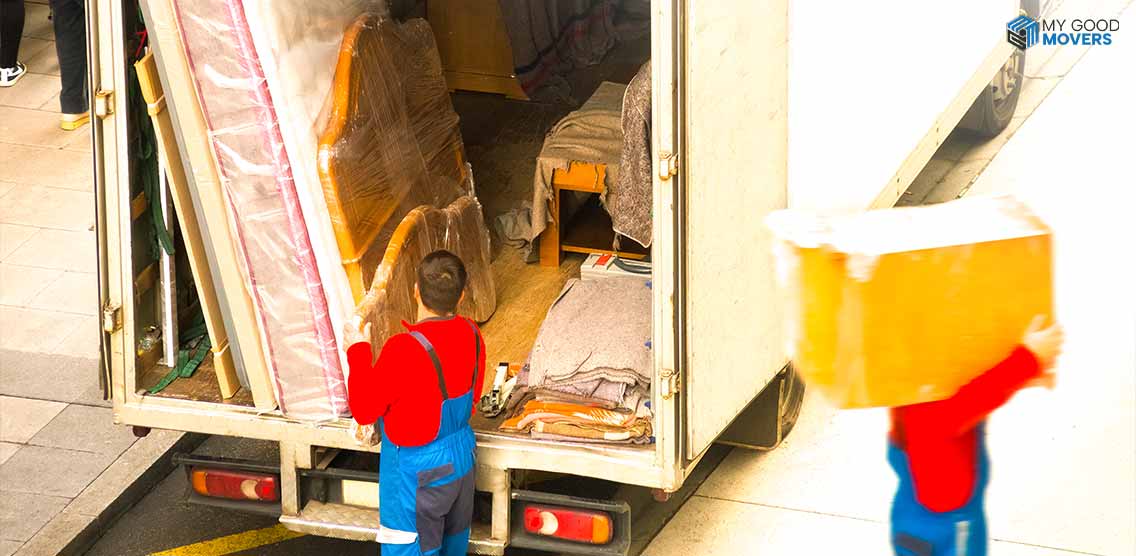Moving isn’t just about changing houses; it’s about transforming your life. But before you can start your new chapter, you have to tackle the move itself.
Anyone who’s ever gone through the moving process knows how true this is.
Packing up your life and fitting it into a moving truck is no small task, but it doesn't have to be a disaster, either.
In fact, getting the truck packed right can save you time, money, and headaches.
Here’s a mind-blowing statistic: the average cost of renting a moving truck in the U.S. ranges from $300 to $1,500, depending on the size of the truck and how far you're moving.
But that’s just the tip of the iceberg.
If your items aren’t packed properly, the costs can increase dramatically, either in extra trips or damaged belongings.
According to a survey, about 35% of movers report that they encountered damage to their belongings due to improper packing.
And let’s be honest, the last thing anyone wants is a broken TV, scratched furniture, or a damaged heirloom.
It's also essential to understand that optimizing space in the truck provides safety but can save you money.
A truck that’s packed poorly can require multiple trips, waste space, and lead to additional fuel charges.
Curious about your moving costs? Fill out the details, and we’ll calculate them for you.

So, how do you avoid all these common pitfalls?
The answer lies in packing a moving truck like a pro.
In this blog, we’ll take you through every step, like choosing the right truck size and how to pack your moving truck.
Choose the Right Size Moving Truck
The first step in packing a moving truck is selecting the right size.
It is compulsory to choose the appropriate truck because it impacts both your budget and the time it will take to complete the move.
Moving truck sizes range from small 10-foot trucks to large 26-foot trucks.
But how do you know which one you need?
It all comes down to the size of your home and the number of belongings you're moving.
Here’s a general guide to help you decide:
| Truck Size | Suitable For | Approximate Capacity |
|---|---|---|
| 10' | Studio apartments, small 1-bedroom homes | 380-450 cubic feet |
| 15' | 1-2 bedroom apartments | 760-850 cubic feet |
| 20' | 2-3 bedroom homes | 1,000-1,200 cubic feet |
| 26' | 3-5 bedroom homes | 1,700-1,800 cubic feet |
For example, a 10-foot truck is enough for a small apartment or a studio, while a 26-foot truck is necessary for larger homes with 3 or more bedrooms.
Rental companies provide online tools to help you estimate the best truck size based on your home’s square footage.
Prepare for Packing: Gather the Necessary Supplies
Once you’ve selected the right truck, it's time to gather your packing materials.
Here’s a list of must-have supplies:
Sturdy boxes in various sizes
Packing tape for securing boxes
Bubble wrap or furniture pads to protect fragile items
Dolly or hand truck for heavy furniture
Furniture covers (especially for mattresses and upholstered items)
Straps and tie-downs to secure items during transport
These items are essential for preventing damage during the move. For instance, wrapping furniture in furniture pads will shield them from scratches. In contrast, bubble wrap can protect delicate glassware or electronics.
Create a Strategic Packing Plan
The most important part of the packing process is knowing how to pack a truck for moving.
Here are some strategies to optimize your truck space:
Start with the Heavy Items
Heavy furniture such as couches, dressers, and large appliances should be loaded first. Place these at the front of the truck (near the cab), as close to the walls as possible.
Disassemble furniture like bed frames, tables, and bookshelves to make them easier to pack and more compact.
Use Vertical Space
One of the most common packing mistakes is neglecting to use the full height of the truck. Items like mattresses and box springs should be placed upright along the walls, which take up less space.
Fill Gaps with Smaller Items
Use soft goods like pillows, blankets, and towels to fill gaps between boxes and furniture. This helps prevent movement during transit and makes use of every inch of space.
Pack the Truck Like a Puzzle
Think of your truck as a giant puzzle. Use every available space, especially corners and the tops of boxes.
Load heavier boxes at the bottom and place lighter, fragile items on top. Stack boxes tightly to minimize shifting.
Secure Everything for the Road
Once your truck is packed, the next step is securing your load. Nothing is more frustrating than arriving at your new home to find that your furniture has shifted or items have broken.
Here’s how to avoid that:
Use Tie-Down Straps
Straps are essential for securing large items like dressers, refrigerators, or even mattresses. Attach them to the truck’s built-in tie-down points to keep everything stable.
Protect Fragile Items
Place fragile items like glassware or electronics in the center of the truck, surrounded by heavier items for protection.
Use bubble wrap and furniture pads to cushion delicate objects and keep them from shifting.
Weight Distribution Matters
Make sure that the load is balanced to prevent the truck from being top-heavy. If the truck is imbalanced, it can make driving more difficult and even cause accidents. Check that the heaviest items are placed low and evenly across the truck.
Unload at Your New Home
Once you arrive at your destination, it’s time to unload.
But before you dive into the process, it’s important to approach it strategically.
Start with Essentials
Unload essential items first. These are things you’ll need right away, like toiletries, clothing, and important documents.
Organize as You Go
Label your boxes when packing so you know which room they belong to. This can save a lot of time when you get to your new home, making it easier to place boxes directly in the right rooms.
Take Your Time
Unload heavy items first and then work your way to the lighter boxes. Always be mindful of your back when lifting.
Best Way to Load a Moving Truck
To make your move even smoother, here are a few additional tips on moving truck packing techniques:
Use Wardrobe Boxes
Wardrobe boxes allow you to hang your clothes directly in the box. This will save time during unpacking, as you won’t have to fold and refold your clothing.
Plan for Fragile Items
If you’re worried about your breakables, consider renting a padded moving container or hiring professional movers for those specific items. Items like fine China or artwork can be especially prone to damage during transport.
Moving Truck Packing Checklist
Before you begin loading, create a moving truck packing checklist. This will help you stay organized and make sure that you don’t forget any important items.





